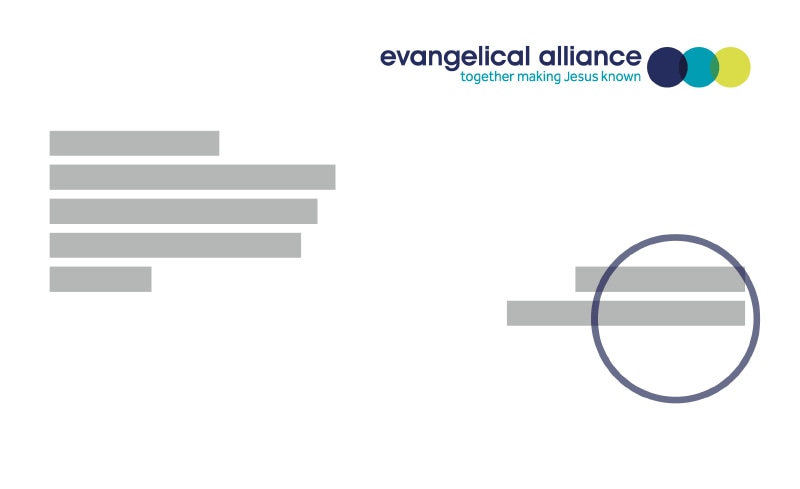The government published the long-awaited draft gender guidance for schools and colleges at the end of December 2023. This started the consultation process that will close on the 12th of March 2024 as the Department for Education seek to hear feedback from the general public.
The Evangelical Alliance have engaged in conversations around gender identity for years and have worked to equip parents and carers to have constructive conversations with their children about relationships, sex and identity. Our Time to talk: Talking about our bodies webinar series was produced to support Christian parents as they discuss heavily contested issues such as gender and sexual identity at home and with their schools.
We are aware of the challenges facing young people and schools as the number of gender-questioning children is increasing and the topic is becoming more prominent in schools. There has been a call for clear guidance and legislation to best support and protect children and this consultation provides parents in England with the opportunity to have their voices heard.
The Evangelical Alliance will also submit a response on behalf of all our members including faith-based schools and youth charities.
The Department for Education have helpfully reinforced the importance of erring with caution when looking to support children who are questioning their gender identity. This attitude threads through the five key principles that lie at the crux of the guidance and have been outlined to help frame requests. Significantly, these principles include the notion that parents should not be excluded from decisions taken by a school or college relating to requests for a child to ‘socially transition.’ This is welcomed, however, there is vagueness surrounding the timescale of when a parent should be included in these discussions.
The guidance also clarified that schools and colleges ‘have statutory duties to safeguard and promote the welfare of children’ and ‘specific legal duties that are framed by a child’s biological sex’. This is key in ensuring that schools must protect single-sex spaces – toilets, changing facilities and showers and under no circumstances can a child of the opposite sex enter.
The Evangelical Alliance is concerned that while the direction of travel in the guidance is helpful, the lack of statutory force may mean that schools do not act with the appropriate caution and care to all children they are responsible for.
A deeper dive into the guidance
It is worth noting that the guidance distinguishes between the words ‘must’ and ‘should’ in the discussion around protocols and how best to handle various situations. The former refers to protocol that is legally binding for schools to follow, while the latter relates to a gentle encouragement of best practices while leaving room for the schools’ discretion.
There are two sections within the guidance that we feel are particularly significant for our members and we have summarised the content below.
Section 5 - Responding to requests and engaging parents
While children may make different requests, the guidance is clear that the only circumstances when parents do not need to be alerted is if the child has not requested a change. Otherwise, the suggestions are explicit that upon a request from a child:
- The school should wait before considering the request to ensure that it is a sustained decision.
- Parents should be made aware of the situation unless informing them might raise a risk of harm to the child. The guidance reinforces that the ‘views of the parents carry great weight.’
Other factors the school should consider are:
- The schools safeguarding obligations.
- The age of the child – requests from younger primary-aged children should be treated with greater caution.
- When relevant, clinical information has been made available to the school by the child or parents, it should be factored into decision-making.
- The seriousness and context of the request. For example, could the child have been influenced by their peers?
- The long- and short-term impact on the child.
- The impact on other pupils – the school may well conclude that the impact on the school community would be too large to agree to the request.
The guidance explains that upon a change being agreed upon, this must be communicated to the wider school community sensitively. Also, ‘other pupils, parents and teachers may hold protected religious views that conflict with the decision that the school or college has made, these are legitimate views that must be respected.’
Section 6 - Handling different information and requests
It is a legal and safeguarding duty for schools to store a pupil’s data accurately. This is important context as the Department for Education reinforces the fact that ‘all relevant staff are aware of a gender-questioning child’s biological sex’. Biological sex remains highly significant regardless of whether a child is questioning their gender.
Subsequently, it is important that schools record a child’s legal name in the admissions register. However, if the parents have been consulted, it has been stated that a child can be known by a different name. When deciding on a child’s request to have others use different pronouns the process is more complicated. The guidance has explicitly stated that ‘primary school aged children should not have different pronouns to their sex-based pronouns used about them’.
When it comes to older children, the guidance does not actively recommend using different pronouns. They should be avoided where possible with the child’s name being used as a priority and schools should ‘only agree to a change of pronouns if they are confident that the benefit to the individual child outweighs the impact on the school community’. Also, sanctions should not be used for honest mistakes made while members of the school community adapt to the new language.
As alluded to through emphasising the significance of biological sex, single sex spaces such as toilets and changing rooms must remain so. No degree of social transition should allow a child into the other sex’s space. Schools may wish to provide alternative facilities that can be secured from the inside and only take one child at a time for those who feel uncomfortable in shared facilities. Boarding schools must also separate rooms for the sexes and if a child is questioning their gender and does not want to share with another child of the same sex, a separate room should be provided for the pupil.
Decisions around uniform should only be made upon agreement with the parents with all factors having been considered. It is recommended that generally a child who is questioning their gender should be held to the uniform standards of other children however, there may be elements of the uniform that are agreed on being changed.
The topic of physical education can be contentious, however, the guidance is explicit in discussing the fact that to provide equal sporting opportunities for girls and boys, having female-only sporting activities is key. It clearly explains that boys can cause harm to girls when playing sports, as they are generally stronger and larger than girls, therefore, despite a child questioning their gender, it would not be safe for a biological boy to participate in a female sports team. Even if safety is not at risk, it is still important to consider the impact on the other students and decide if the sport is still fair.
Finally, single sex schools are only allowed to take in pupils of one sex, regardless of whether the child is questioning their gender.
Please click here if you would like to read the full 20-page document.
Responding to the consultation
While we are encouraged by the direction of the guidance, we want to encourage parents and carers to engage with this consultation and share your opinions and experiences of your child’s school, both positive and negative, to improve this guidance and to make a real difference in schools and colleges across the country. We acknowledge that strengthening the legal basis for the guidance will be vital for it to make a significant impact.
There are 42 questions in the online survey. Some are about the respondent, and many are specific questions relating to the draft wording of the guidance. The majority are structured as ‘yes/no’ questions followed by the option to share a personal point of view.
We have outlined a few that are particularly key with suggestions of how to respond:
In response to this question, we suggest you select ‘no’.
We would suggest the paragraph on 'watchful waiting' should include a review period where discussions with parents are had. It is important that as a child expresses a desire to pursue social, medical or surgical transitioning further the guidance strongly encourages schools to engage with parents at the earliest opportunity before a decision is made.
Question 16 is linked to the previous question and allows respondents to provide further explanation.
We suggest you tick the following, but there are other options you may feel are appropriate as well:
- How schools and colleges should involve parents in decisions.
- How schools and colleges should manage engagement with parents with different feelings or views to their child.
- How schools should put in place a ‘watchful waiting’ period before acting on a child’s request.
You may also want to make these points in the open text box:
- Schools should seek to keep parents informed when there are concerns over a child’s wellbeing – particularly in relation to relationships, sex and body image.
- Parents and carers should always be considered to have the primary responsibility over a child’s emotional needs, unless there is a genuine cause for concern over the safety of a child or young person at home. In the case of a child struggling with gender dysphoria and choosing to identify as the opposite gender within school, it is essential that parents are informed so that the child can receive support at home.
- Schools should support parents and carers by helping create more open conversations in the home and pointing parents towards the right support services for their children.
We suggest you select ‘no’.
In the cases where there has not been social transitioning of any kind and there remains repeat requests from the child, the school should be encouraged to introduce ‘mediated conversation’ between a senior staff member or pastoral lead for the school and the child’s parent/s.
This question also provides an opportunity for parent and carers to provide personal examples. We would encourage you to share your own experiences engaging with the school. You may want to share:
- what worked well.
- where you felt the school listened to your concerns and so on.
Here we encourage parents to provide examples from their own child’s school or college and what they did or did not appreciate and what they feel the preferred outcome should have been. Suggested bullet points to inspire contributions:
- Parents might want to share how the delay in providing this guidance has led to miscommunication and conflict in their child’s school.
- Parents might want to share examples of where they have been listened to by their child’s school or provide examples of what they would expect as a response from a school to know their opinion has been taken seriously.
Here we encourage parents to provide examples from their own experiences of their child’s school or college and what they did or did not appreciate. Suggested bullet points to inspire contributions:
- Does your school differentiate between pastoral care and reasonable accommodation of young people questioning their biological sex? If so, share how your school has done this well.
- Share positive examples of where your school accommodated your Christian perspective on sex and identity.
This consultation is closed on 12 March 2024 and we are waiting to hear how the new Secretary of State for Education will proceed. When we have more information the advocacy team will update our members.

